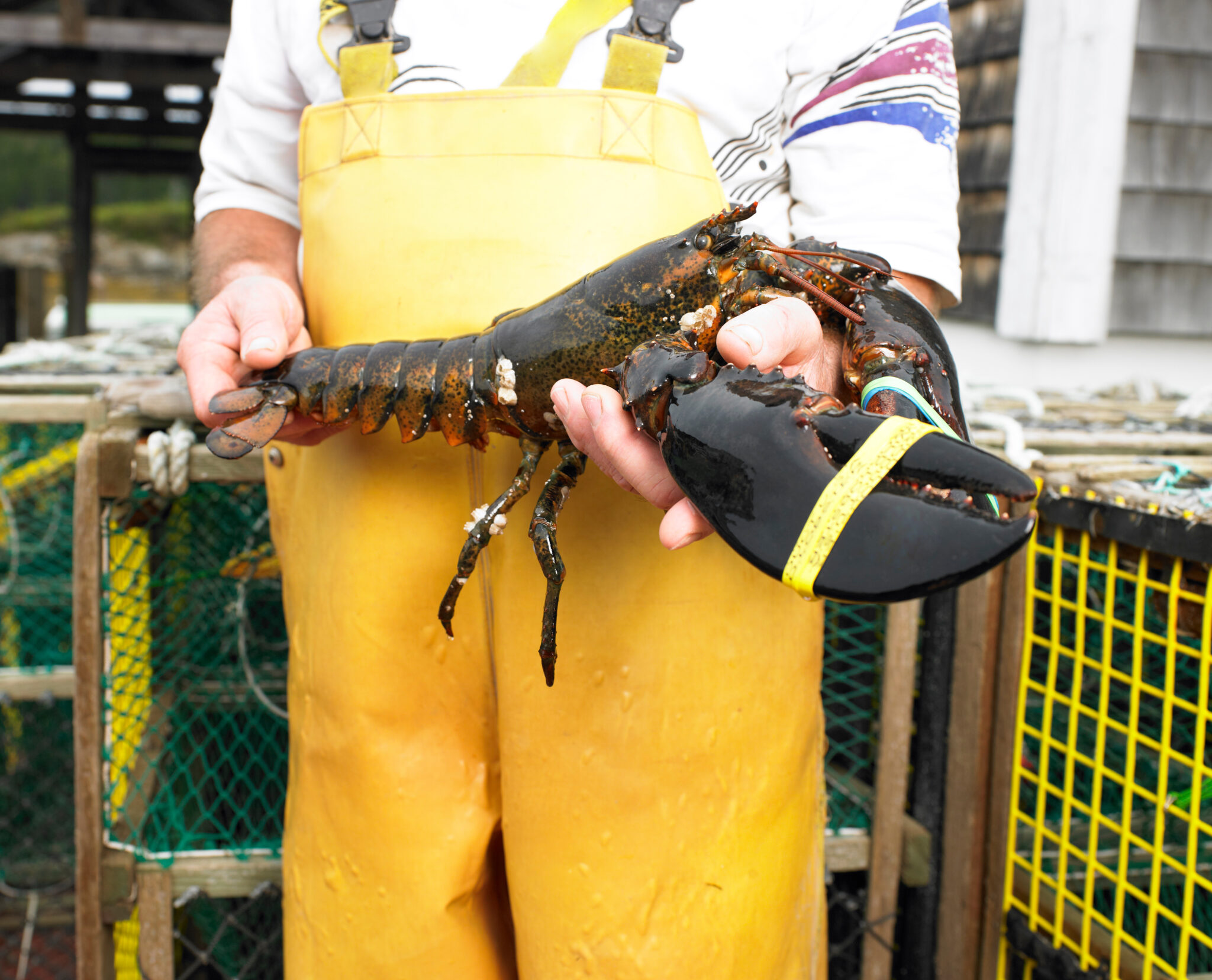
Maine lobster prices, like any commodity, are driven by supply and demand. In this case, delicious seafood is in demand for consumption. Though supply and demand are primary metrics in determining Maine lobster prices, the price of Maine lobster is known for its volatility and is greatly affected by market conditions in addition to a range of other factors.
Where Maine lobster is sold—at a grocery store or a restaurant, wholesale or retail, regardless of state; or how it is prepared—whole live lobster in comparison to lobster meat; or even the cost of lobster in comparison to other Maine seafood—all these conditions factor in how Maine lobster prices are determined. That said, as a helpful guide to understand Maine lobster prices, here are five important factors that influence how much the price you pay for lobster.
Supply and Demand
Addressing the law of supply and demand specifically, Maine lobster prices are set more by the interaction that occurs between supply and demand than a ‘natural’ cycle. When lobster supplies are high and exceed demand, prices are likely to decrease. On the other hand, if the supply falls short or is limited, or if demand surges, prices are likely to rise. More than fluctuating quantities drive supply and demand, the price of goods and services also influences it. Commonly referred to as market conditions.
Market Conditions
When pundits and economists point to market conditions as a reason that may influence the price of products like lobster, they are referring to the external factors that govern the law of supply and demand. For Maine lobster prices, this can range from the state of the economy, competition, and cost of operating a trawler to consumer preferences, regulations, and global trade dynamics. One common observation often made is when the overall economy is doing well, people may be more inclined to spend on luxury seafood items like lobsters, leading to increased demand and potentially higher prices. However, market conditions for lobster are more likely to be influenced by factors such as the number of lobster suppliers, processors, and distributors in the market—high levels of competition can pressure prices. As can weather and the seasons, which can affect the ability to catch lobster, causing inventories to dip.
Seasonal Variation
Lobster fishing in Maine is subject to seasonal variations due to weather conditions. Extreme weather events or environmental issues that affect lobster populations or disrupt fishing operations can have short-term or long-term effects on prices. Lobster prices will fluctuate if people can’t put their boats on the water due to high or gale winds, snow storms, or blizzards. The peak lobster fishing season is usually from late spring through early fall. During soft shell season, when the weather is favorable, more lobster is available near shore, and the catch is higher. Prices are generally lower due to readily available supply throughout the season. In the winter months, when lobsters move offshore, and conditions limit the fishing, prices tend to be higher.
Fishing Regulations
Maine’s lobster industry is regulated to ensure sustainability and protect the lobster population. Though the industry has long been self-regulating, restrictions are in place on the size of lobsters that can be harvested, the number of traps used by fishermen, and the number of licenses to fish, all of which can subsequently affect prices. Regulation of other marine species has also affected Maine lobster prices in recent years.
Shipping and Distribution Costs
If you happen to live in Chicago or Phoenix, the costs involved in transporting lobsters from Maine will play a role in pricing. Distance, fuel prices, and logistical challenges can influence the final cost to consumers.
Cost Comparison
Maine lobster prices can fluctuate significantly throughout the year based on the above factors. Compared to other Maine seafood, the price of Maine lobster is higher due to its immense popularity and, more importantly, the high demand from domestic and international markets. The demand for Maine lobster is far greater than other Maine seafood, making it more expensive.
Fresh Maine haddock, for example, in comparison to Maine lobster, is less expensive. Whole live lobster prices range from approximately $12-$15 per 1-1/8 pound lobster, but a prepared pound of lobster meat can range anywhere from $52-$85, whereas fresh Maine haddock sells between $12-$14 per pound. Haddock is more abundant, available, and relatively easier to catch, and its supply is predictable, making the demand for haddock and its price relatively fixed. On the other hand, the price of wild-caught Maine sea scallops can fluctuate based on the conditions during the harvesting season. Adverse weather conditions, red tide events, or other factors that affect the ability to catch scallops can impact supply, thus influencing prices. Yet, compared to lobster, the demand for Maine sea scallops, which can range from $22-$26 per pound, is still less.
Order the Freshest Maine Lobster from Klenda Seafood
Maine lobster prices are influenced by various factors and can vary from year to year. From supply and demand to seasonal variations in the weather and conditions at sea, the price of lobster can fluctuate. All that said, when it comes to seafood from Maine, there is no other in more demand than Maine lobster. It is global. Ultimately, that’s what affects the price the most. Order online from Klenda Seafood or visit our South Portland location today for fresh, high-quality lobster at the best price!
